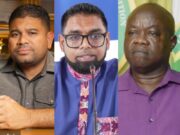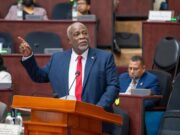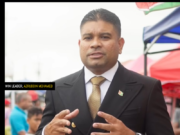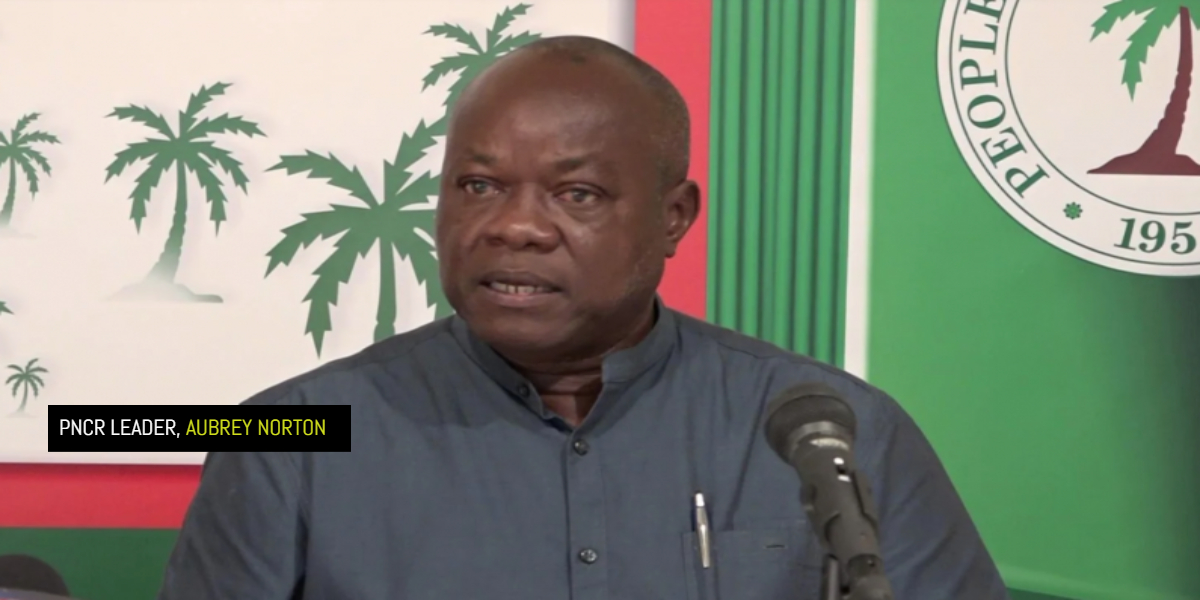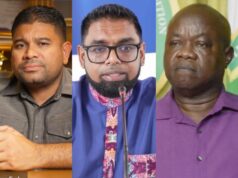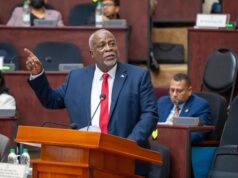March 2022 marks two years since Guyana confirmed its first imported case of COVID-19, a virus that is now responsible for over 1,200 local deaths, along with the catastrophic disruption of livelihoods and the Guyanese way of life.
As of March 11, 2022, exactly two years after virus confirmation, 551, 757 tests were conducted with 11.4 per cent returning positive. Men account for 46 per cent (29,070) of the 63,134 confirmed cases, while 54 per cent or 34,064 females have tested positive. Two per cent (1,224) of those infected have died, while 61,699 or about 98% have recovered.
FLASHBACK
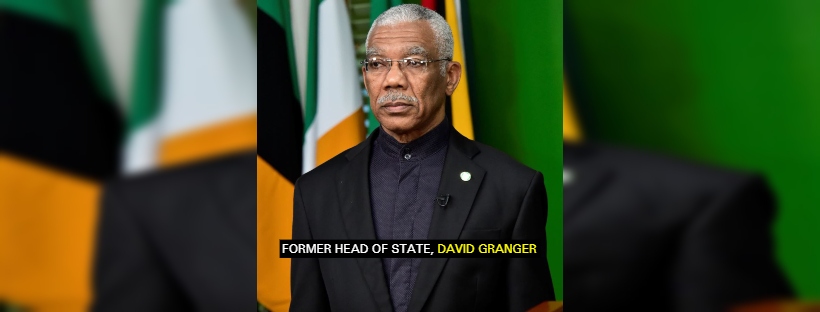
It was former President, David Granger, who formally announced COVID-19’s presence during his address to the nation on March 11, 2020. The first victim was identified as a 52-year-old Guyanese woman who had arrived in Guyana from the United States of America on March 5. She was presented to the public health system on March 10 and was found to have uncontrolled diabetes and hypertension. She subsequently died at the Georgetown Public Hospital Corporation at 08:00hrs on March 11. Health professionals, two hours later, sought to conduct tests for COVID-19 based on the patient’s travel history. A clinical sample was collected and sent to the National Reference Laboratory, where tests confirmed the diagnosis at approximately 17:00hrs.
REACTION
Health officials began implementing procedures including the deployment of a health team to the home of the deceased for assessment and initiation of public health prevention measures and the identification and contact tracing for all possible exposed persons. Hours after Granger’s address, reports of panic shopping and price gouging began to surface. The following day, prices for hand sanitisers and detergents skyrocketed, while citrus fruits became a rare commodity. The nation learnt then that the Competition and Consumer Affairs Commission (CCCA) had no legal standing to regulate market prices. Persons began using products like alcohol and methylated spirits as sanitisers, while mask-wearing as a measure was being discussed. The government also began the process of closing the country’s borders. 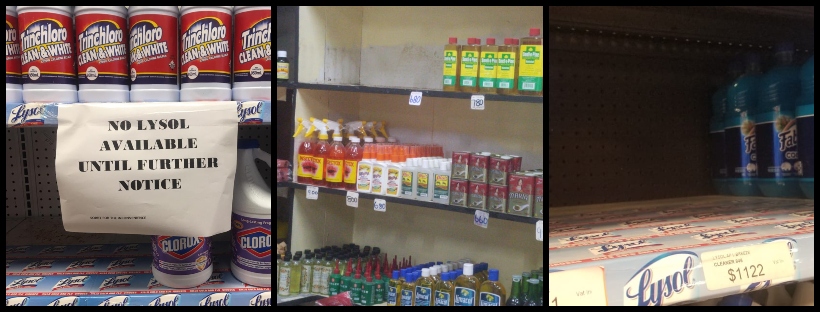
On Friday, March 13, 2020, the Education Ministry announced the closure of all schools in the country, and the following day, the government approved the Staff Rotation measures to prevent clustering at the workplaces.
On March 16, five days after virus confirmation, Granger exercised his powers in accordance with the Public Health Ordinance act and appointed the health minister to undertake a series of measures including actions necessary to “restrain, segregate and isolate persons suffering from the disease, or who may be likely from exposure to the infection suffer from the disease.” This particular measure is what empowers the apparatuses of the State to offer institutional quarantine and isolation.
ELECTIONS
As a panicking citizenry suffered a higher cost of living amidst job cutbacks, more uncertainty arose as electoral rigmarole in the highly contested and controversial March 2 General and Regional Elections played out in the background.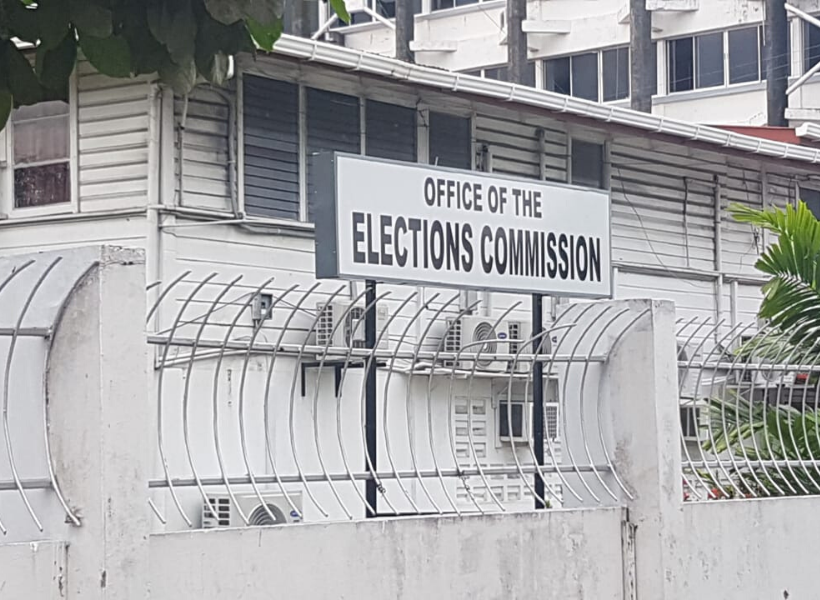
Concerns began to mount as the David Granger-led administration – already relegated to the status of a “caretaker” government after falling to no-confidence motion – began feeling the pressure as political opponents, commentators, activists and numerous regional and local blocs emphasized the need for a government with the legal authority to implement measures to stave off the spread of the virus.
Allegations of electoral rigging began to surface with several quarters labelling Granger’s confirmation of COVID-19’s presence as a diversional tactic to cloak plans to thwart the will of the electorate. The nation would soon learn that COVID-19 was, at that time, only gaining momentum. One month later, the country had conducted 193 cases, recorded six deaths and 45 infections.
On August 2, 2020, almost five months after virus confirmation, the PPP/C was declared the victor of the March polls. By then, the country had already tested 4,893 persons, recorded 21 deaths and 474 confirmed cases. The number of recoveries was listed at 185.
INTERNATIONAL TRAVEL
Exactly seven days after virus confirmation, Guyana shuttered its borders and blue-pencilled international passenger flights. The Tourism, hospitality and transportation sectors were decimated.
Weeks later, requests from Guyanese seeking repatriation lifts began to surface in the media as countries in North America began imposing restrictions and curfews.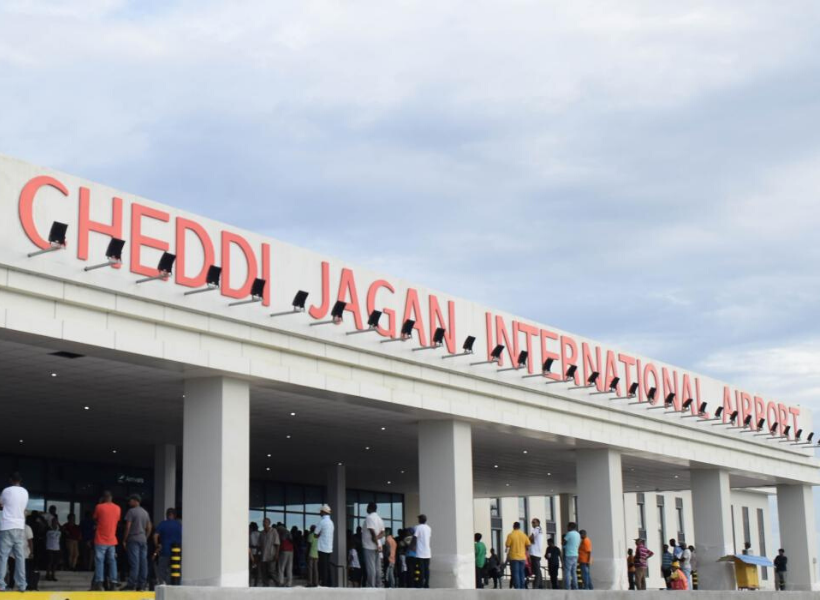
Guyanese, stranded abroad, began petitioning the government to make arrangements for their return. June 2020 saw some repatriation charter flights being approved to bring Guyanese home as partial lockdown of the country commenced. The first batch of stranded Guyanese was repatriated on Saturday, June 6, 2020, on a flight from Miami, USA. The Eastern Airlines flight landed at the CJIA at approximately 16:30hrs with 109 citizens who were all sanitized and screened upon entering the airport.
After being closed for almost a year, the Guyana-Suriname border reopened for legal travel between the two countries on June 21, 2021, with the MB Sandaka, departing at 08:00hrs from Moleson Creek to South Drain, Suriname with eight passengers. The vessel returned to Guyana five hours later with eight Guyanese.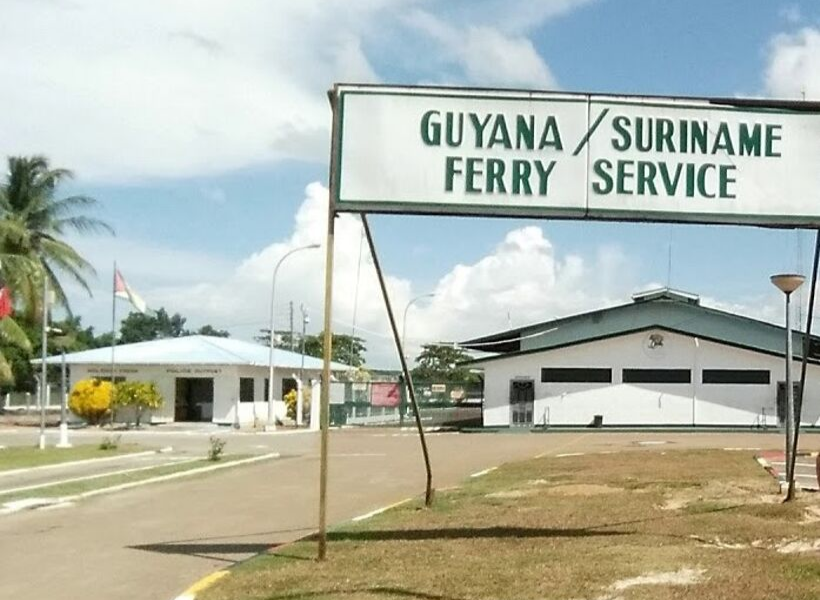
In November 2021, the Guyana-Brazil border was reopened for travel only between Mondays and Fridays. However, last month, the COVID-19 Task Force extended the timeline to now include weekends.
Guyana’s borders are now officially open, but travellers to Guyana, are still required to present relevant authorities with a negative molecular biological or rapid PCR COVID-19 test result recorded within 72-hours prior to the date of arrival, in addition to proof of vaccination.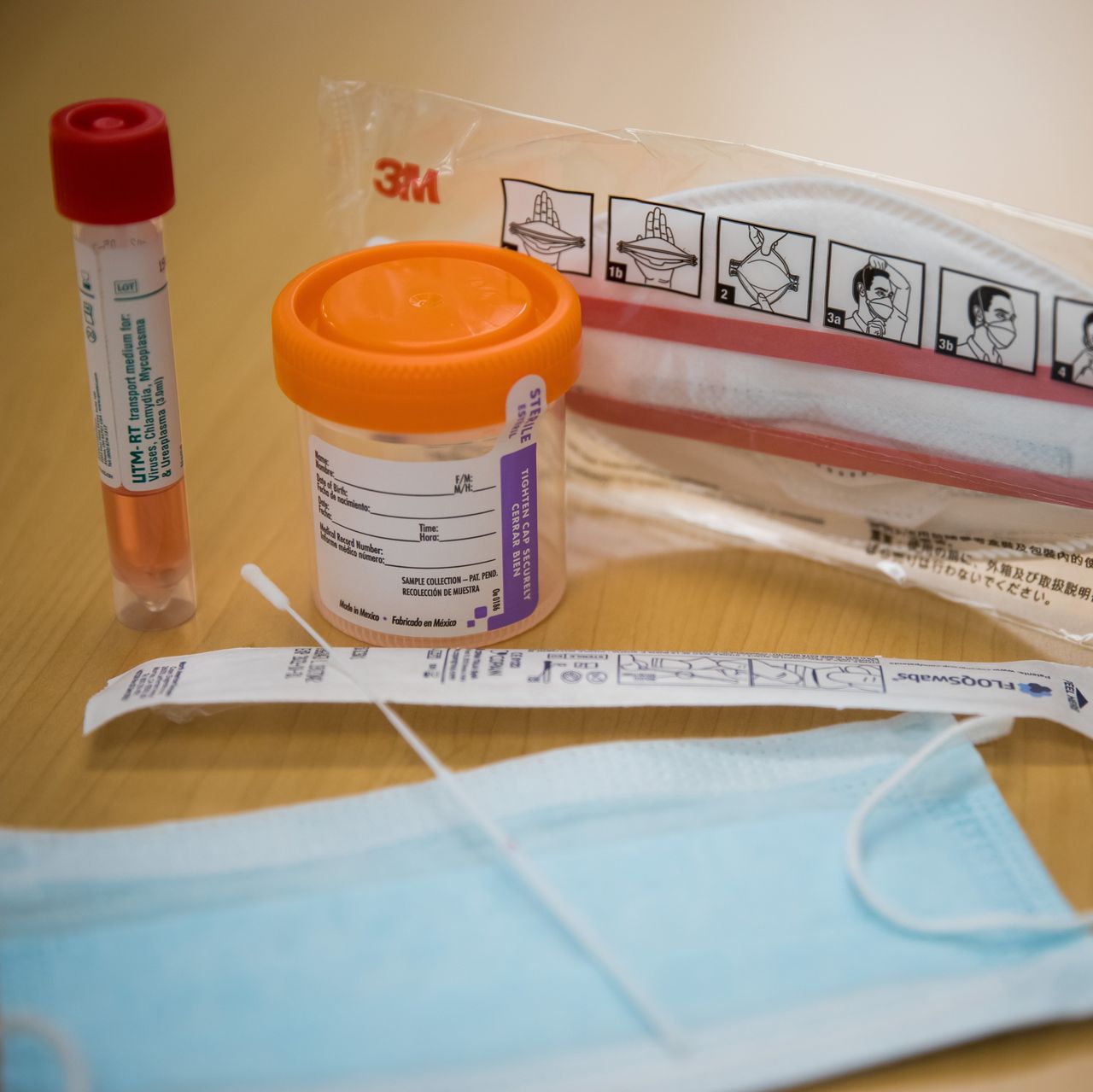
Children, who are not eligible to receive vaccines, are exempt, along with persons, who because of health reasons, cannot take a COVID-19 vaccine. A letter from a medical practitioner to confirm those reasons are required for exemption, a Ministry staffer told this publication yesterday.
VACCINATION
While there is no cure for COVID-19, scientists have found ways to alleviate symptoms and increase the chances of surviving the virus and reduce hospitalization through vaccination.
Guyana commenced the rollout of its vaccination campaign on February 11, 2021, after almost a year of adhering solely to COVID-19 preventative measures. The Health Ministry began the distribution of AstraZeneca (ChAdOx1 nCoV-19) jab to healthcare workers at the Georgetown Public Hospital Corporation (GPHC). Taking the jab would remain a choice, the new Health Minister, Dr Frank Athony had promised as thirty-plus Healthcare workers received the vaccine that day, with Brinnet Bernarai, a GPHC Pharmacist, becoming the first person to receive a jab.
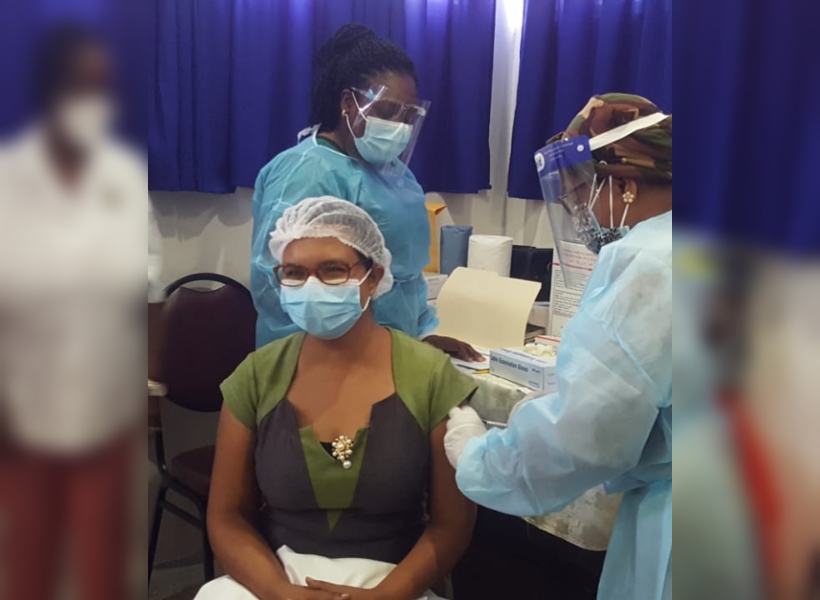
The global vaccination campaign pushback from persons who later became known around the world as “anti-vaxxers”, had made it to Guyana’s shores. Conspiracy theories began to surface. The most popular at that time was the supposed implantation of “microchips”.
Anti-vaxxers said that these microscopic electronic devices were behaviour modifiers that would activate at the appropriate time and render vaccine recipients mindless drones to a particular country, dogma or celestial being. The government immediately launched an education campaign, but one year later, health authorities are still battling with vaccine hesitancy, primarily in hinterland communities. Religious heads and village leaders have been blamed by the Health Minister for this alleged misinformation campaign.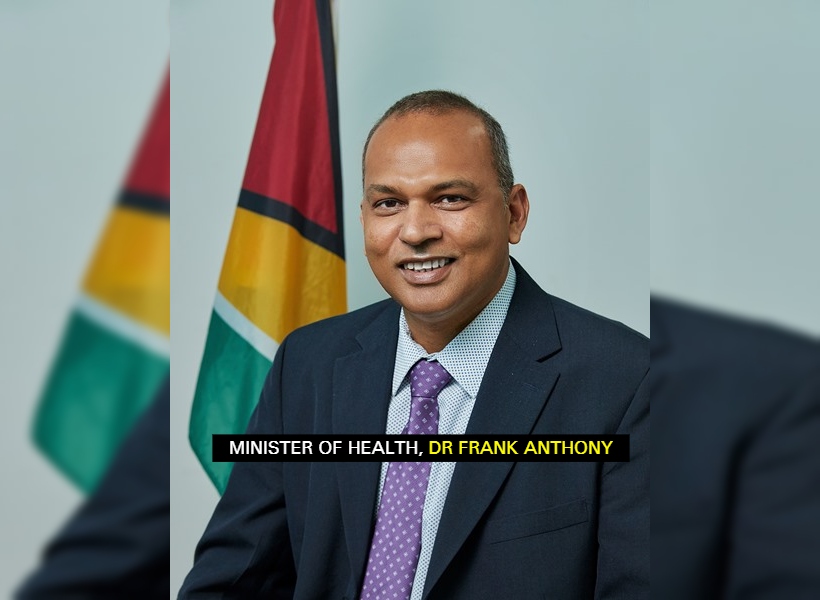
In September 2021, as part of the COVID-19 Emergency Measures (No. 22), the government announced that Guyanese would be required to be vaccinated to access public buildings; this covered people who were fully vaccinated or partially vaccinated, meaning they had just one dose of one of the COVID-19 vaccines. The unvaccinated were asked to make appointments to access government services.
The APNU+AFC opposition party led the charge by pointing out that the requirement was tantamount to removing personal choice by leveraging much-needed services. The “My Body, My Choice” movement, which rose to challenge the new vaccine requirement, later faded into the background, much like the “vaccine has a magnetic field” theory.
As of March 11, 2022, 435,509 adults have received their first dose of a vaccine, which represents 84.9% of the above-18 population, with 332,605 (64.8%) in receipt of both doses. According to the Ministry of Health, 33,938 adolescents (between 12 and 17 years of age) have received their first dose. This equates to 46.5 per cent of that cohort, with 24,612 (33.7 per cent) taking both jabs. Some 54,195 booster shots have been administered to date.
RIPPLES
The COVID-19 pandemic has not only highlighted mankind’s resilience but has also exposed weaknesses in their systems. In Guyana’s case, the lack of technological implements has been a major bugbear towards the transition to online learning.
Earlier this year, Education Minister Priya Manickchand registered concerns over COVID-triggered learning loss. She said that Guyana has already begun to feel some of the effects of the problem which is evident in the rate of school dropouts and even some female students becoming pregnant.
It is estimated that at least 1,000 primary school pupils from the public school system have dropped out of school over the past two years as a result of hardships brought on by the COVID-19 pandemic. The Ministry recently launched a programme where regional education officers are currently on the ground trying to locate these students who are suspected to have been absorbed by the local workforce. Over 500 have since been located.
With the disruption of the global supply chain, demands have skyrocketed, triggering price increases on imported products, including items needed in the local value-added sector. A reduction in freight charges to pre-pandemic rates was granted, however, the devastating flood in May 2021 saw a drastic increase in prices for locally produced agricultural products. Eschallots, celery and other herbs and some spices attracted more than a 200% increase in prices at markets. Following the cessation of the rainy season and the restoration of agricultural activities, prices have begun to decrease. The global supply chain, already fractured by COVID-19 setbacks, recently received another blow following Russia’s invasion of Ukraine. Experts say that more economic challenges loom.
LIVE WITH IT
With the emergence of new variants, countries around the world have recognised that COVID-19 is going to be around longer than expected and are vigorously pursuing vaccination as the sole viable means of restoring some semblance of normalcy. Guyana has also taken that route with herd immunity its main objective. Schools are expected to be fully reopened after the Easter holiday, and teachers are also prepping to return to the classrooms.
Both public and private entities are now implementing measures to promote safety while maintaining productivity. COVID-19 measures have now become part of daily life. Masks, once regarded as uncomfortable and burdensome, have become an added feature to our appearance, coupled with the scent of isopropyl alcohol.
The government recently removed the national curfew but has cautioned against public gatherings. Active cases in the country are down from 12,000 in January of this year to less than 500 one week ago.
